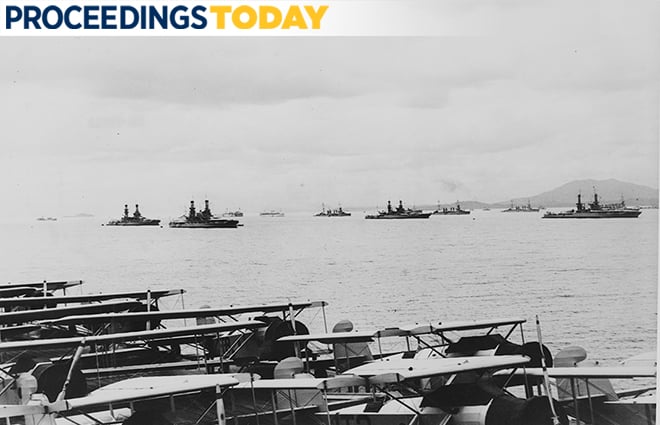
There is a good deal of writing about the need to reinvigorate wargaming and experimentation across the naval and defense community. This is a healthy sign as the nation increasingly contemplates potential future wars against peer military opponents. Maintaining a capable military is key to preventing such wars, and “testing” in wargames is fundamental to ensuring that capability.
In the interwar period (1919 to 1941), the Naval War College conducted wargames of increasing scope and complexity each year, culminating in its capstone strategic game. The War College passed its “appreciations” from those wargames to the fleet to inform the annual Fleet Problem. That exercise brought together most of the Navy’s forces in one venue and produced important insights. The results of these exercises went to Chiefs of Naval Operations (OpNav) and the War College. OpNav used them to inform research and developments and program priorities and then shared its insights with the War College. In the middle of this highly effective triangle was the Navy’s officer corps. (In 1939, more than 90 percent of the Navy’s flag officers had attended the Naval War College as students.)
Freed from many overseas responsibilities after World War I and severely limited by funding and treaties, the Navy had time to think and experiment. It did these tasks well. As Commander in Chief of the Pacific Fleet Admiral Chester Nimitz stated, only the Kamikaze attacks came as a surprise during World War II. The triangular relationship outlined above surely was instrumental in the gradual evolution from a fleet bent on a single battle in the western Pacific that would quickly end a war with Japan to one that recognized the likelihood of a long war and a crawling offensive across the Pacific to finally bring Japan to its knees.
Underlying the triangle are several key factors that supported the Navy’s successful innovations prior to World War II:
► The Navy went to sea and had years of experience that produced the professionalism for deliberations, wargames, exercises, and planning. (Today’s joint warfare is more complex, demanding even more operational experience.)
► The Navy had a culture of frank and honest internal criticism. This is evident from the records of exercise debriefs and in U.S. Naval Institute Proceedings articles.
► Even with the solid head start Navy enjoyed as the result of its wargames and fleet problems, it still took two years of intense combat to get the right people in charge, using the right doctrine and good equipment.
But all was not ideal. The Navy’s focus on experimentation at the tactical level led it to miss key implications about the strategic impact of naval forces. As Craig C. Felker argues in his masterful Testing American Sea Power: U.S. Navy Strategic Exercises, 1923-1940, the focus on gaining sea control at the tactical level prevented Navy leadership from seeing the strategic implications of submarine warfare or the remarkable contribution amphibious operations would make in the war. Equally important, he argues that a tactical focus inhibited understanding of the logistics requirements of a long war and how to develop, move, and protect that all-important artery of modern war.
There is much to learn from the interwar period. Fortunately, the Navy and the broader defense community are looking hard at what lessons can be gleaned from this rich history.
Captain Roncolato is an independent consultant and currently is working on DDG-1000 engineering training. He commanded the Arleigh Burke-class guided-missile destroyer USS The Sullivans (DDG-68) and Destroyer Squadron 26.
Photo caption: A Fleet Battle Problem of the 1930s. (From the USNI Photo Archives)
For more great Proceedings Today content, click here.


